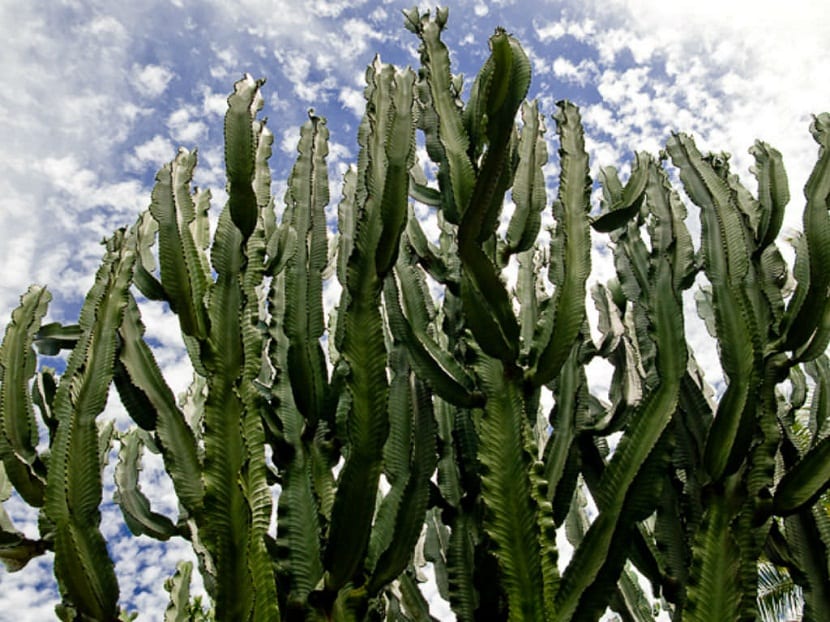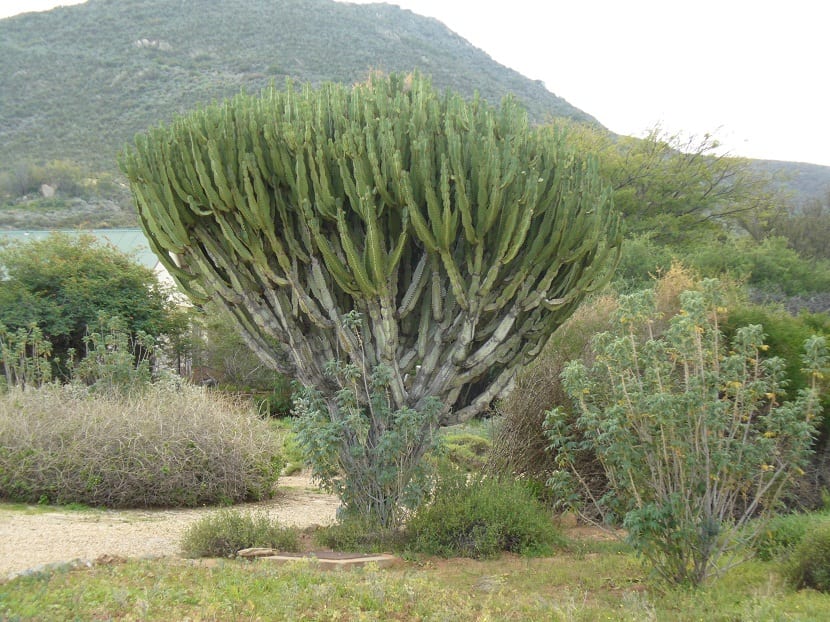
El Euphorbia ingens It is a woody and perennial tree belonging to the Euphorbiaceae family. Originally from the south of the African continent, where it reaches up to 12 meters in height. Hence its name derived from the Latin ingens, which means huge. While the name by which it is commonly known Candelabrum, derived from its characteristic round crown formed by long dark green branches similar to cacti.
Habitat

This species is from warm areas, tolerates long periods of drought well. It grows frequently in rocky areas or in the deep sand between bushes. It can be seen wild in Africa, in the regions of KwaZulu-Natal, Limpopo Province, Mozambique, Zimbabwe and elsewhere.
Characteristics of the Euphorbia Ingens
They are one of the largest genres, since there are more than 1700 species distributed throughout the world. Practically all of them have one characteristic in common, that they contain a white, very spicy and toxic substance.
This is a thorny tree, green in color, with a short and strong trunk; its bark is grayish, rough and furrowed. As said before, it can reach 12 meters in height, but in exceptional cases and under favorable conditions it can reach 15 meters. The branches rise about 3 meters upwards practically erect, showing a set of ramifications that make up a wide rounded crown. It has abundant sap or latex.
From primary and perishable leaves, the photosynthesis process takes place through green stems, similar to thorns. Its flowers produce a nectar not suitable for consumption, because it generates a burning sensation on the palate, which increases with water.
Farming
It adapts very well to home gardens. Although the plant is from hot regions, it tolerates temperatures down to -2 ° C. Prefers open and sunny environments. It is easy to grow, it grows in dry, sandy, but well-drained soils. Can be grown wild for medicinal use, sometimes to use its wood. Also in rocky gardens.
In relation to its irrigation, it requires being humid occasionally in summer. Choose an appropriate pot of approximately 10 cm, wider, than the space that you will actually need. Now if the idea is to take the plant outside during the summer, then uses a plastic pot that is lighter and easier to handle. Add one part of moss and peat, mixed with two parts of sand, to the soil. You can add a small portion of gravel to facilitate drainage. Once planted in pots, the plant requires little care.
Uses
The latex of this species is very toxic and can cause serious irritation to the dermis, damage to the eyes and serious diseases in people and animals, if ingested. Now if applied correctly, can be used therapeutically as a scrubber and to treat ulcers. The wood of the main trunk is light and very resistant, which is why it is used in the manufacture of doors, planks and boats.
Propagation

It is very easy to propagate by seed, division of its roots or cuts of the tree.
Seed
Sowing is preferable during the fall; this way the seedlings will be ready for spring. This species is born spontaneously very easily, so you will only have to move it to the place of your preference.
Division
During the fall season, take the roots and divide them with the use of a pitchfork. The result will be individuals similar to the mother.
Tala
You must cut down at the end of flowering. Proceed to cut its branches and submerge them in a container of cold water in order to stop the spillage of the sap. Then you put it to dry in a shaded environment, but ventilated for two weeks, during which time the calluses will form.
You insert the stems and keep them at a temperature of approximately 28 ° for two weeks. It is important to note that due to its toxic milky sap content, it should not be planted in gardens visited by children.